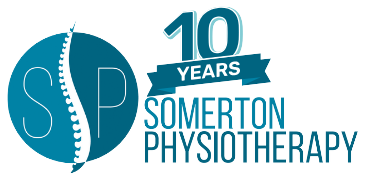New Year Fitness Goals and Preventing Injury
It is now the time of year when many of us decide to improve our health and fitness goals by starting a new exercise regime. This may involve taking up an exercise class in the gym or getting back to running, cycling or swimming. For some, this new exercise programme may be the most exercise they have done in several months or years and while the benefits of physical activity are many there are also some associated risks.
Some of the most common injuries we see at our Blanchardstown village clinic around this time of year include:
- Lower back and neck strains
- Shoulder injuries
- Knee pain or patellar tendon problems
- Ankle sprains
- Shin splints
- Leg muscle and tendon strains
There are many causes of such injuries but in general these may be summarised as “misuse, abuse and overuse”. In other words, doing exercises with incorrect technique, doing too much too soon or not paying attention to important recovery factors.
How then can someone return to being active without injuring themselves?
Tips to prevent injury:
No matter what type of exercise you choose to do it is important to consider your current level of fitness and start at a level that is appropriate for you. Allowing a rest day or two in between gym sessions is a good idea in the first few weeks to allow your body to get used to exercise.
If you are new to running, it might be best to start with a walk-jog programme to build up your aerobic fitness and run short distances before attempting longer runs. A couch to 5km programme would be recommended for novice runners.
When doing strength exercises in the gym, always start with a weight that is light enough to complete around 10 repetitions in one set and increase the load and volume of each exercise gradually over a number of weeks.
Ensure that your gym programme is well balanced and includes some push and pull exercises – too often people focus on pushing exercises e.g. bench press and don’t do enough pulling movements e.g. dumb bell rows which can lead to overuse shoulder injuries.
It is advisable to do a proper warm up e.g.10-15 minutes on a bike and end all your sessions with a cool down. Dynamic upper and lower limb stretching may also be beneficial as part of a warm up.
Adding load on top of poor and inefficient movement patterns is a sure route to injury while ensuring good gym technique will reduce your injury risk. A Chartered Physiotherapist is able to identify these movement patterns and provide corrective exercises to improve them.
If you do suffer an injury, appropriate early intervention and management are key to reduce further damage and aid recovery. Our physiotherapists are well qualified to assess and diagnose exercise-related injuries and plan your rehabilitation back to full pain-free activity.
If you are looking for a Physio in Dublin 15 for your fitness goals, you can book an appointment to see one of our experienced Physio’s to get a more individualised assessment and treatment approach.
